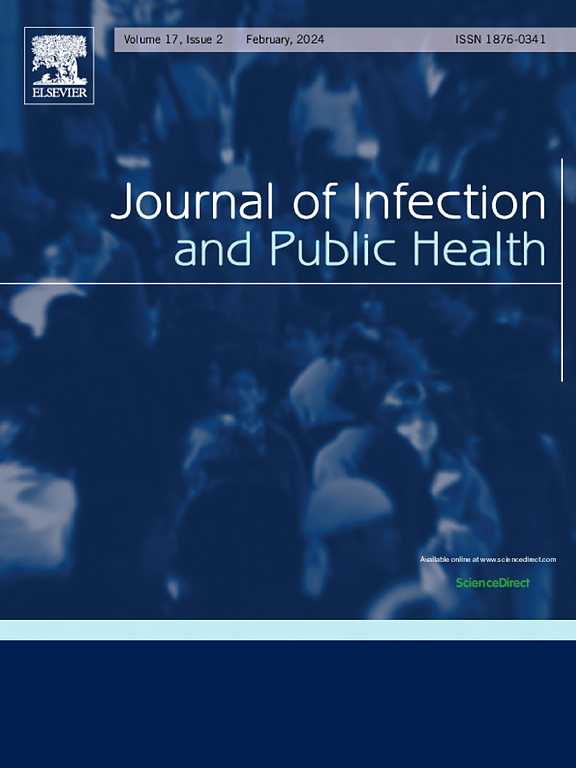A region-structured model for early warning of Plasmodium vivax malaria transmission risk in the Republic of Korea
IF 4.7
3区 医学
Q1 INFECTIOUS DISEASES
引用次数: 0
Abstract
Background
Malaria cases in the Republic of Korea decreased during the coronavirus disease 2019 pandemic but surged in 2023. Current models inadequately address spatial heterogeneity in transmission dynamics. This study aimed to address this by designing a region-structured model considering spatial heterogeneity based on regional malaria data from high-risk areas.
Methods
Malaria-risk areas were identified using data from the Korea Disease Control and Prevention Agency (KDCA), with eight regions designated as hotspots. The population heterogeneity of the model by region was represented using the “Who Acquires Infection From Whom” matrix. The model was calibrated using 2014–2018 KDCA civilian malaria-case data. The reproduction number () of each region was then calculated using the estimated parameters and predicted malaria dynamics.
Results
In the hotspots, the value of rose along with the number of long-latency patients, followed by an increase in short-latency patients. The points where exceeded and fell below one varied by region. Ganghwa-gun exhibited the longest period (), whereas Deokyang-gu had the shortest. Maximum values ranged from 1.1 in Deokyang-gu to 2.7 in Ganghwa-gun. A criterion was established to estimate the timing of based on the weekly cumulative incidence per 100,000 people.
Conclusion
This study constructed a region-structured model reflecting spatial heterogeneity using actual data. By estimating and an easily accessible index for each region, the model provides an indicator that assists in implementing effective malaria management policies at the regional level.
求助全文
约1分钟内获得全文
求助全文
来源期刊

Journal of Infection and Public Health
PUBLIC, ENVIRONMENTAL & OCCUPATIONAL HEALTH -INFECTIOUS DISEASES
CiteScore
13.10
自引率
1.50%
发文量
203
审稿时长
96 days
期刊介绍:
The Journal of Infection and Public Health, first official journal of the Saudi Arabian Ministry of National Guard Health Affairs, King Saud Bin Abdulaziz University for Health Sciences and the Saudi Association for Public Health, aims to be the foremost scientific, peer-reviewed journal encompassing infection prevention and control, microbiology, infectious diseases, public health and the application of healthcare epidemiology to the evaluation of health outcomes. The point of view of the journal is that infection and public health are closely intertwined and that advances in one area will have positive consequences on the other.
The journal will be useful to all health professionals who are partners in the management of patients with communicable diseases, keeping them up to date. The journal is proud to have an international and diverse editorial board that will assist and facilitate the publication of articles that reflect a global view on infection control and public health, as well as emphasizing our focus on supporting the needs of public health practitioners.
It is our aim to improve healthcare by reducing risk of infection and related adverse outcomes by critical review, selection, and dissemination of new and relevant information in the field of infection control, public health and infectious diseases in all healthcare settings and the community.
 求助内容:
求助内容: 应助结果提醒方式:
应助结果提醒方式:


